Begonias are a true gem in the world of gardening, charming enthusiasts with their vibrant colors and diverse shapes.
As a passionate gardener and lover of these exquisite flowers, I’m excited to share my insights and experiences with you.
Whether you’re a seasoned gardener or just starting, begonias are a fantastic addition to your garden, bringing beauty and life to any space.
Benefits of Growing Begonias
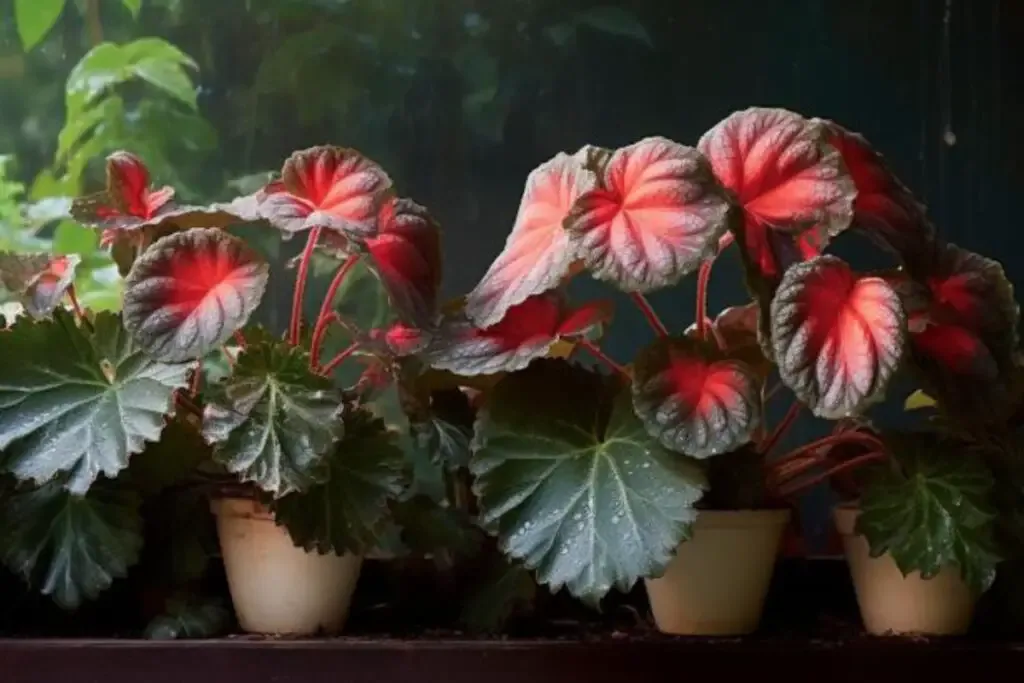
1. Easy Maintenance
One of the best things about begonias is their low-maintenance nature. They are perfect for busy gardeners or those who are new to the hobby. Begonias are quite forgiving and adaptable, thriving in a variety of environments with minimal fuss. This makes them a great choice for those who want to enjoy beautiful blooms without the constant worry of intricate care.
2. Versatility
Begonias are incredibly versatile. They can flourish indoors in pots or outdoors in garden beds and hanging baskets. This adaptability allows you to get creative with how and where you display them, adding a pop of color to your home or garden in various ways.
3. Long Blooming Season
Begonias boast a long blooming season, often providing continuous color from late spring through fall. This enduring display of flowers is a delight for any gardener, ensuring that your garden remains vibrant and lively for a significant part of the year.
My Favorite Begonia Varieties
Dive into the enchanting world of begonias with me as I share my top picks from this diverse and vibrant plant family. Let’s explore these begonias that have captured my heart and brightened my garden!
1. Dragon Wing Begonia
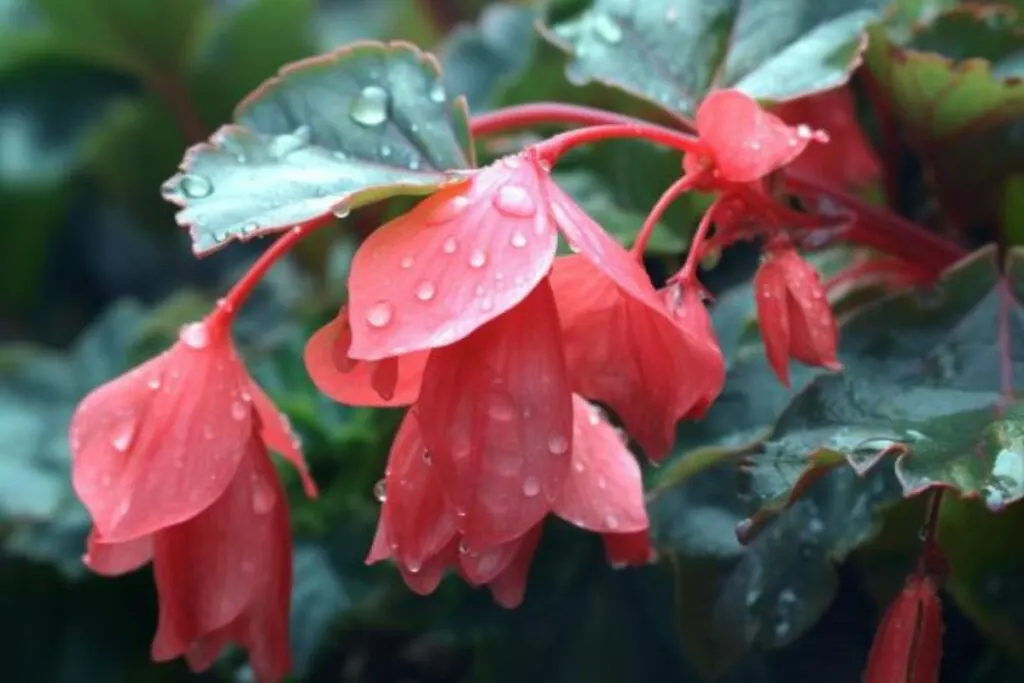
This is a personal favorite of mine for its angelic and unique appearance. With its glossy, wing-shaped leaves and clusters of heart-warming red or pink flowers, it truly stands out in any garden setting.
This variety is particularly hardy and can grow quite large, making it an excellent choice for both containers and garden beds.
2. Rex Begonia
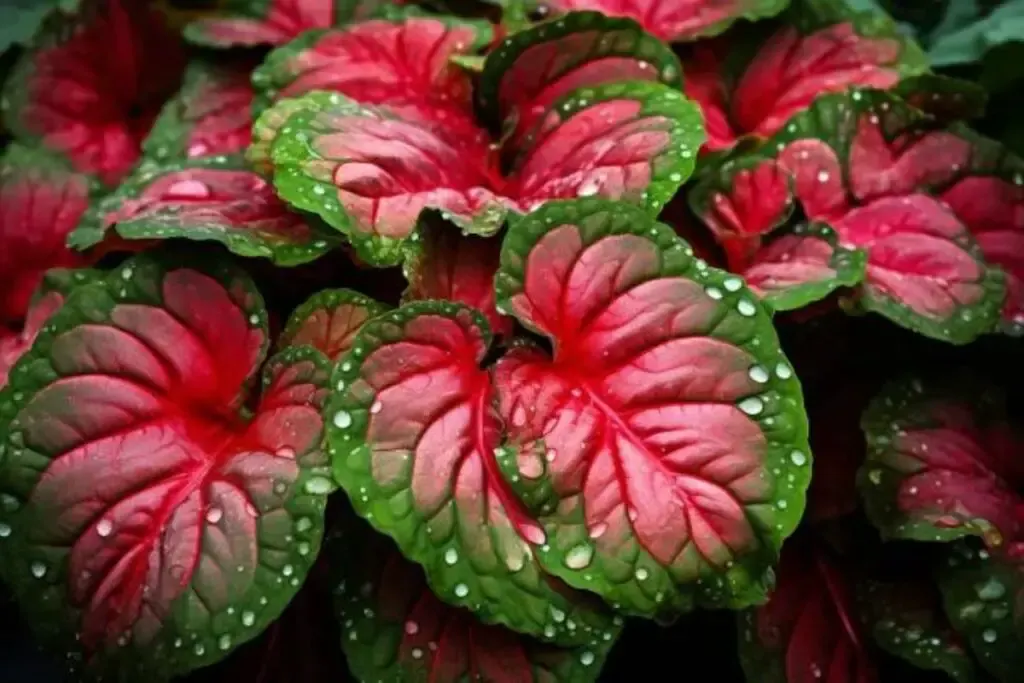
For those who love a tapestry of colors and patterns, the Rex Begonia is a must-have. Its leaves are a spectacular display of colors, textures, and patterns, ranging from silver and purple to red and green.
While its flowers are more subtle, the Rex Begonia’s foliage alone makes it a showstopper in any indoor space.
3. Tuberous Begonia
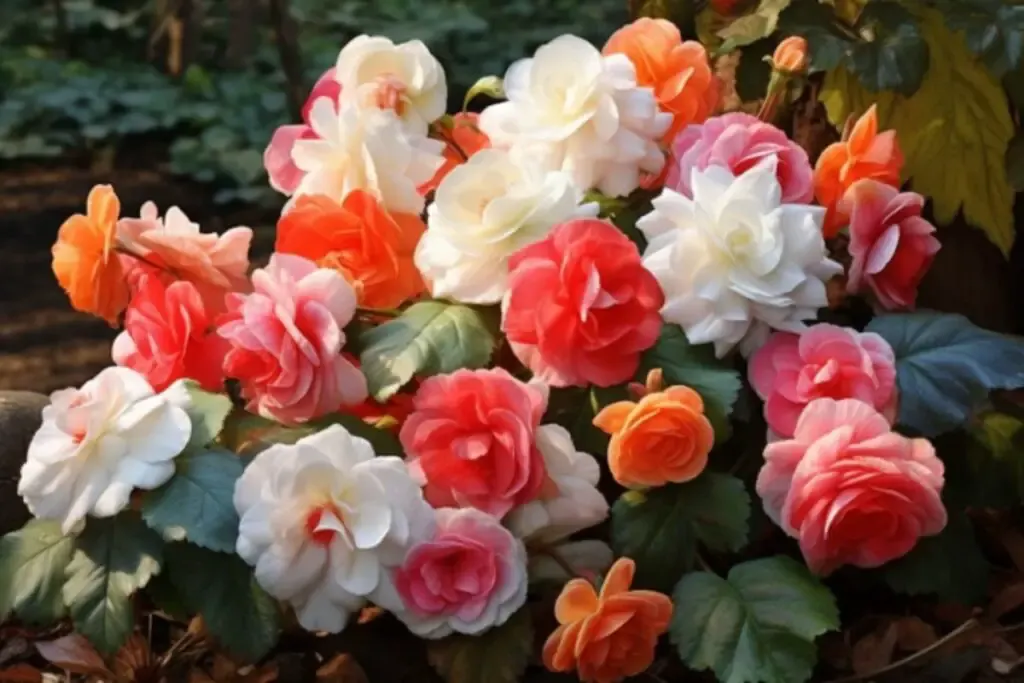
It is renowned for its large, rose-like blooms that come in a wide range of vibrant colors, including yellow, orange, red, and pink. This variety is perfect for hanging baskets and window boxes, offering a cascading effect that is truly breathtaking.
Tuberous begonias are a bit more demanding in terms of care but absolutely worth the effort for their stunning display.
Begonia Care
Caring for begonias is a delightful experience that combines simplicity with a touch of attentiveness. I have here some key tips to ensure your begonias thrive.
Planting
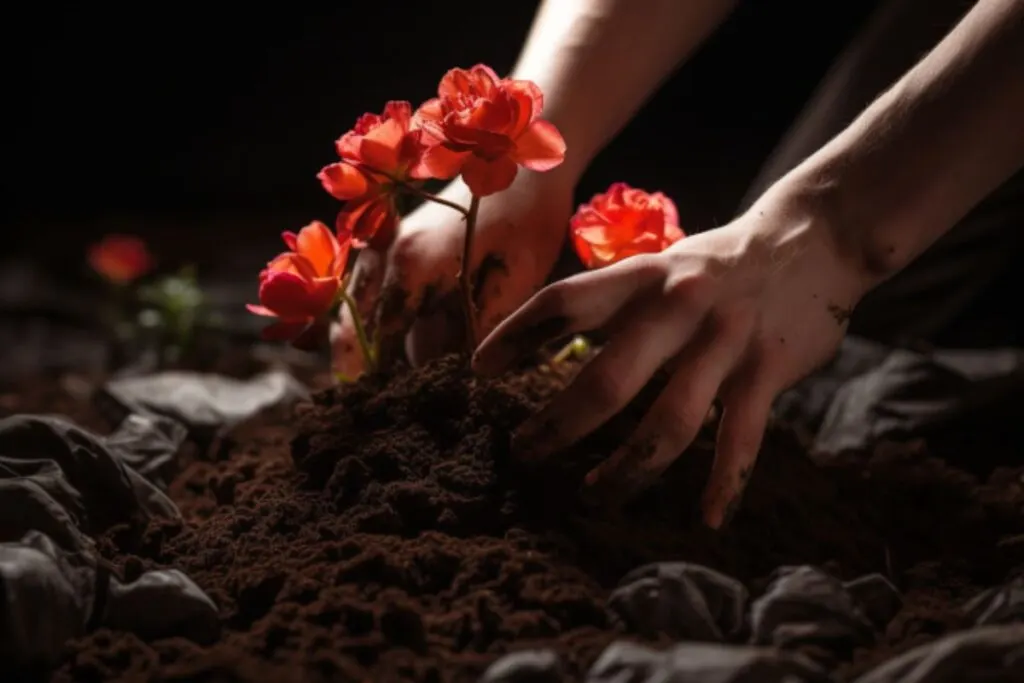
Planting begonias is an easy and rewarding task, perfect for gardeners of all levels. Follow these five simple steps to ensure your begonias get the best start:
- Select the Right Location: Choose a spot with bright, indirect light. Avoid areas with harsh direct sunlight or deep shade.
- Prepare the Soil: Use well-draining soil, rich in organic matter. If planting in pots, ensure they have drainage holes.
- Planting Time: Spring is ideal. This gives begonias time to establish before the full bloom season.
- Planting Depth: Plant begonia bulbs or seedlings just above the soil surface, allowing enough space for growth.
- Water Gently: After planting, water your begonias gently to settle the soil around the roots. Avoid overwatering.
Light
Begonias prefer bright, indirect sunlight. Too much direct sun can scorch their leaves, while too little light can hinder flowering. Finding a spot with the right balance of light is crucial. For indoor begonias, a window with filtered light is ideal.
Soil
The secret to thriving begonias lies in the soil: a well-draining, rich, and organic mix is key. Aim for a balance of peat, compost, and perlite to provide the perfect foundation. This soil composition ensures your begonias have the ideal environment for robust growth and bountiful blooms.
Water
The key to watering begonias is consistency. They like to be kept evenly moist but not soggy. Overwatering can lead to root rot, so it’s important to let the soil dry out slightly between waterings.
For outdoor begonias, natural rainfall often provides sufficient moisture, but during dry spells, supplemental watering may be needed.
Temperature and Humidity
Begonias enjoy warm temperatures and moderate humidity. They can be sensitive to extreme heat and cold, so it’s essential to protect them from frost and intense summer sun.
If you’re growing begonias indoors, consider using a humidifier or placing a water tray near them to maintain adequate humidity levels.
Fertilizer
Feeding your begonias with the right fertilizer is like giving them a gourmet meal – it’s essential for their health and beauty. Use a balanced, water-soluble fertilizer every two weeks during the growing season.
This regular nourishment supports lush foliage and vibrant blooms, keeping your begonias looking their best. Remember, a little bit of food goes a long way in the world of begonias!
Pruning
Pruning begonias is a breeze and incredibly rewarding! Here’s a quick and effective guide:
- Right Time, Right Tools: Grab those clean, sharp pruning shears in late winter or early spring. This is your time to tidy up any weary stems and leaves, giving your begonias a fresh start.
- Deadheading Delights: Snip off those spent blooms regularly. It’s like giving your begonias a little encouragement to keep on blooming beautifully.
- Shape It Up: Lightly trim overgrown branches to keep your begonias looking neat and tidy. This not only adds to their charm but also keeps them healthy.
- Thinning for Thriving: A little thinning here and there ensures good airflow and light, which are key to a happy, blooming begonia. Remember, a well-pruned begonia is a happy begonia!
Propagating
Propagating begonias is a delightful way to multiply the beauty of your favorite plants, and it’s surprisingly easy! There are a few methods you can use, but here’s a simple and effective approach:
- Leaf Cuttings: This method is especially great for Rex begonias. Cut a healthy leaf, and make small incisions on the veins on the underside. Then, lay the leaf on moist soil in a pot, securing it with small stones or pins.
- Stem Cuttings: For many begonia varieties, stem cuttings are the way to go. Snip a healthy stem about 4-6 inches long, remove the lower leaves, and plant it in moist soil or water. Roots will develop from the nodes where the leaves were removed.
- Division: This is ideal for mature, bushy plants. Gently divide the root ball at the time of repotting, ensuring each section has roots and shoots. Plant each division in its own pot with fresh soil.
How to Grow Begonias From Seed
Growing begonias from seed is like unlocking a secret garden of possibilities! It’s a bit of a patience game, but oh, so rewarding. Here’s how to embark on this delightful journey:
- Sow with Care: In late winter or early spring, sprinkle those tiny begonia seeds onto moist, fine seed-starting soil in a tray. Remember, they need light to germinate, so no burying them under the soil!
- Keep Them Cozy: Cover the tray with clear plastic to create a snug little greenhouse. Place it in a warm spot with indirect light and watch for those first shy sprouts in a couple of weeks.
- Nurture the Young: Once your begonia babies are big enough, carefully transplant them into their own pots. Continue to pamper them with gentle watering and light, and soon you’ll have a collection of begonias to brighten up any space!
Growing in Pots
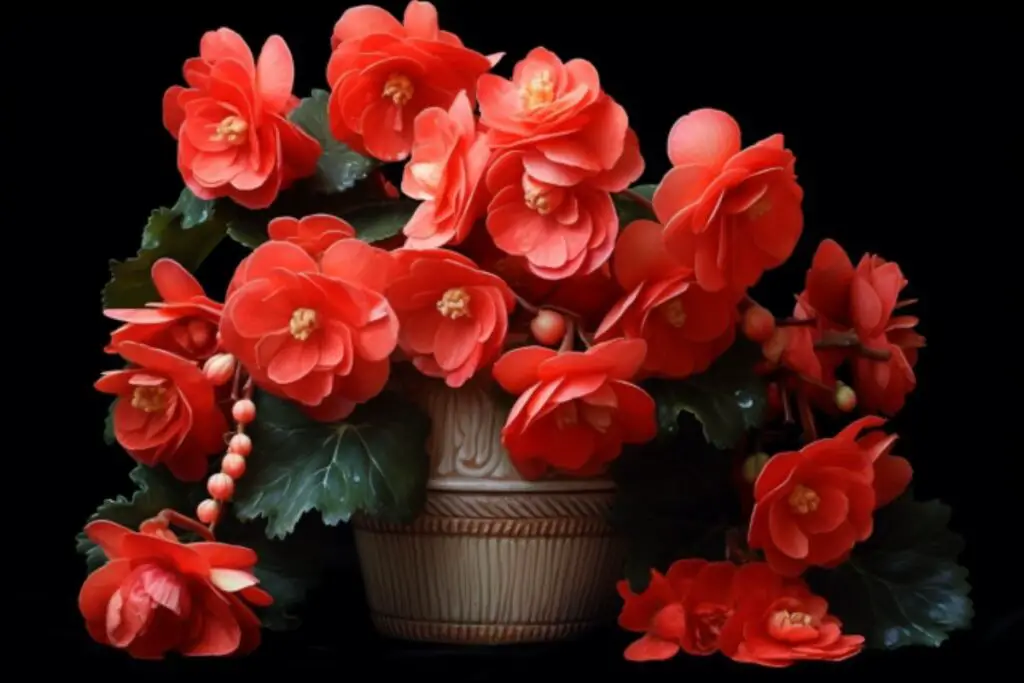
Growing begonias in pots is a fantastic way to bring their vibrant charm indoors or to adorn patios and balconies. It’s quite straightforward, and the results are always stunning. Here’s how to do potting perfection:
- Pot Picking: Grab a pot with drainage holes to give your begonias the perfect home. They love moisture but don’t appreciate soggy feet.
- Soil Matters: Choose a well-draining potting mix. Begonias are all about balance – they crave rich soil but dislike being waterlogged.
- Sunlight Smarts: Place your potted beauties in a spot with bright, indirect light. They adore the light but prefer not to bask in the direct sun.
- Tender Loving Care: Water when the top inch of soil dries out and feed them with a gentle fertilizer every couple of weeks during their growing season. Watch them thrive and bloom, bringing joy to any space they grace!
Overwintering
When it comes to overwintering begonias, it’s like tucking them in for a cozy winter nap. This step is key to ensuring they bounce back beautifully in spring. Here’s how to keep your begonias happy and healthy during the colder months:
- Bring Them In: As the cold approaches, move your begonias indoors. If they’re in the garden, transplant them into pots. A cozy indoor spot away from frost is ideal.
- Light and Water: Place them in a spot with indirect light and cut back on watering. They need less moisture while they’re taking their winter rest.
- Pause the Food: Hold off on fertilizing until spring. Right now, it’s all about giving them a peaceful break, so they can return with vigor when the warmer days roll back around.
Transplanting
Transplanting begonias is a bit like helping them move to a new, exciting neighborhood. It’s a refreshing change that can spur new growth and vitality. Here’s how to do it with care:
- Choose the Right Time: Spring is the perfect season for transplanting. It’s like giving your begonias a fresh start when they’re full of energy and ready to grow.
- Handle with Care: Gently coax them out of their current spot, being mindful to keep the roots happy and intact. Think of it as carefully lifting a sleeping baby from a cradle.
- Prepare the New Spot: Whether it’s a comfy pot or a cozy garden space, make sure it has well-draining soil. It’s like setting up a welcoming new home for your begonias.
- Tuck Them In: Replant them at the same depth they were before and give them a good drink of water. It’s like settling them in with a warm blanket and a cup of tea.
Common Pests and Diseases
In the world of begonias, a few uninvited guests and pesky problems can occasionally pop up. But don’t worry, with a little know-how, you can keep your begonias blooming beautifully.
Pests
- Aphids: These tiny green troublemakers can cause leaves to curl and wilt. A blast of water or a dab of insecticidal soap usually sends them packing.
- Spider Mites: Almost invisible, these pests weave fine webs and leave leaves looking speckled. Increasing humidity and using a miticide can help show them the door.
Diseases
- Powdery Mildew: This looks like someone dusted your plants with flour. Good air circulation and a friendly fungicide can keep it in check.
- Botrytis Blight: This gray, moldy villain attacks in damp conditions. Snip off affected areas and let the airflow to keep your begonias bright and perky.
Keep an eye out, and with these simple fixes, you’ll keep your begonias as happy and healthy as can be. It’s all part of the adventure of gardening!

